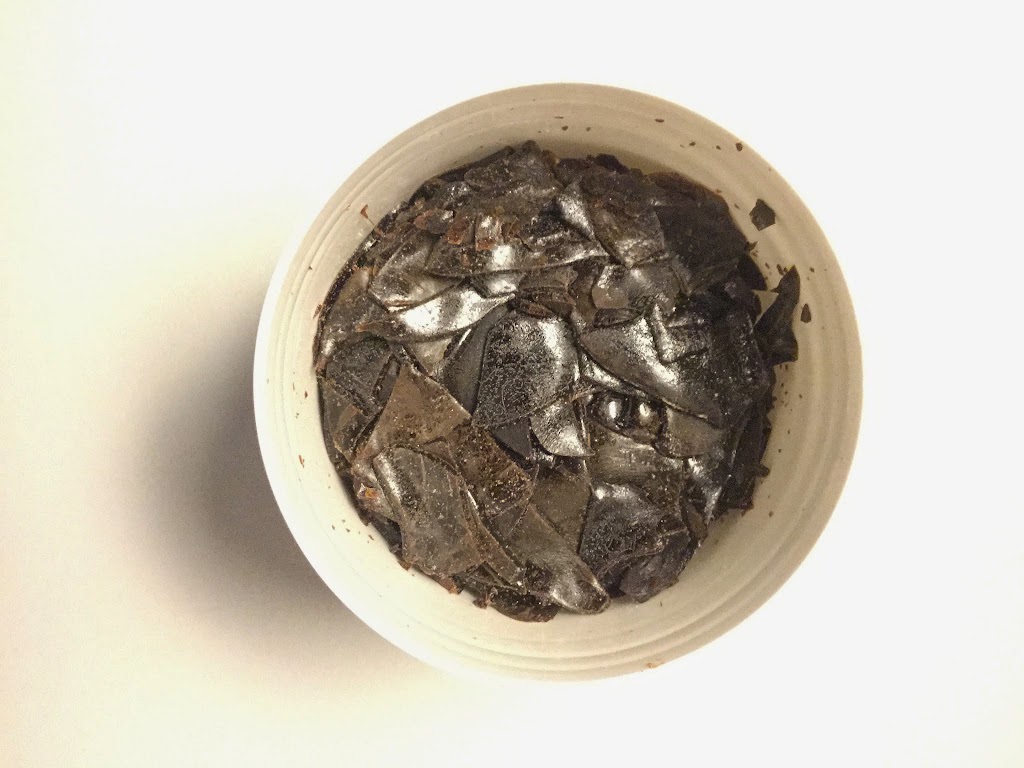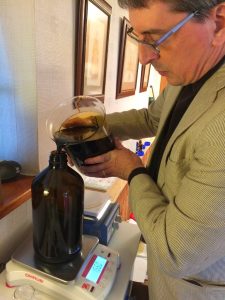Tolu Balsam is a very useful natural fixative as well as a lovely base-note in its own right, but it isn’t the easiest of materials to handle. It comes from the South American tree Myroxylon balsamum.
It is used to fix materials such as juniper, petitgrain, spices and florals of many kinds and frequently forms a key component of oriental and chypre styles of perfume.
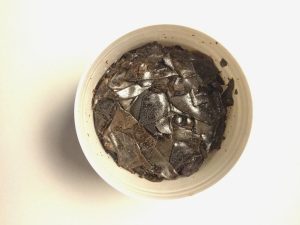 |
| Rock-likc pure Tolu Balsam |
Arctander describes it as: “a brown, orange-brown or dark
yellowish brown mass, brittle when cold, and
the fracture is glasslike or flintlike. Its odor is
sweet-balsamic, cinnamic in type, faintly floral and with an undertone of vanillin.” and at normal UK temperatures it’s certainly rock-hard and behaves rather like a chunk of Brighton Rock when it’s broken.
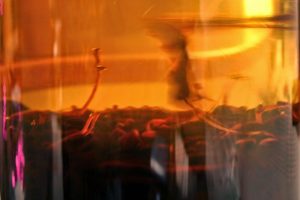 |
| Tolu and TEC form a strange, alien landscape |
So to make it practical to handle it needs to be diluted in a suitable solvent – it’s often sold already diluted in this way though the dilution isn’t always declared nor the solvent named – I bought a pure Kg recently and diluted it ready for use in TEC (tri-ethyl citrate) in a process that turned out to be both quite involved and to produce some fun images, so I thought I’d write it up here.
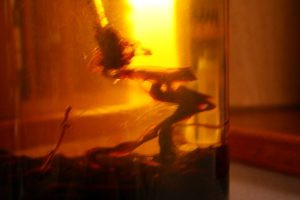 |
| Is that a creature emerging? |
The first job was to get the Kg of rock-like Tolu Balsam soft enough to pour out of its container, which I did by sitting the container in a bain-marie and boiling the water beneath it: this took a few hours before the material was fully liquid. Meanwhile a pre-weighed out amount of TEC was heated on my heater-stirrer with a stirring bar already in the bottom of it (if you don’t heat the solvent as well the tolu will go hard again as soon as it hits the cool liquid and takes much longer to go into solution).
The next step is to pour the hot, liquid tolu into the pre-warmed solvent (insulated gloves are called for for this step of course). At this point we realised that there was a photo opportunity as the resulting non-yet-mixture looked like an alien landscape. The tolu settled to the bottom of the solvent and the application of glass rods was necessary to get it to start dissolving as it was much too sticky for the automatic stirrer at that stage: as those went in it started to look like one of those scenes from the Alien series where the creatures start unfolding from the cave walls . . .
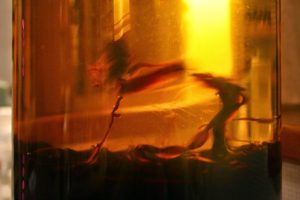 This is all being done in a three litre glass beaker and as you can see in the later pictures the manual stirring took some time before we could leave the automatic stirrer to get on with the job on its own and the balsam tended to dry on the glass very quickly too.
This is all being done in a three litre glass beaker and as you can see in the later pictures the manual stirring took some time before we could leave the automatic stirrer to get on with the job on its own and the balsam tended to dry on the glass very quickly too.
The cling film you can see was to minimise loss of aromatic quality as this was all being done hot, although with such a high-boiling material and high-boiling solvent that isn’t a big concern.
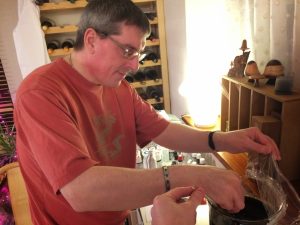 |
| A stirring start |
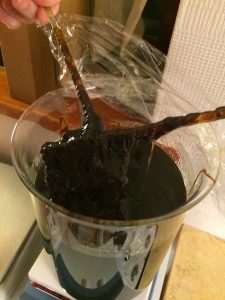 |
| Gloopy-looking stuff |
 |
| Pasta possibly? |
We even captured a little video of that part of the process, which gives you a clear idea of the consistency once it’s finished:
